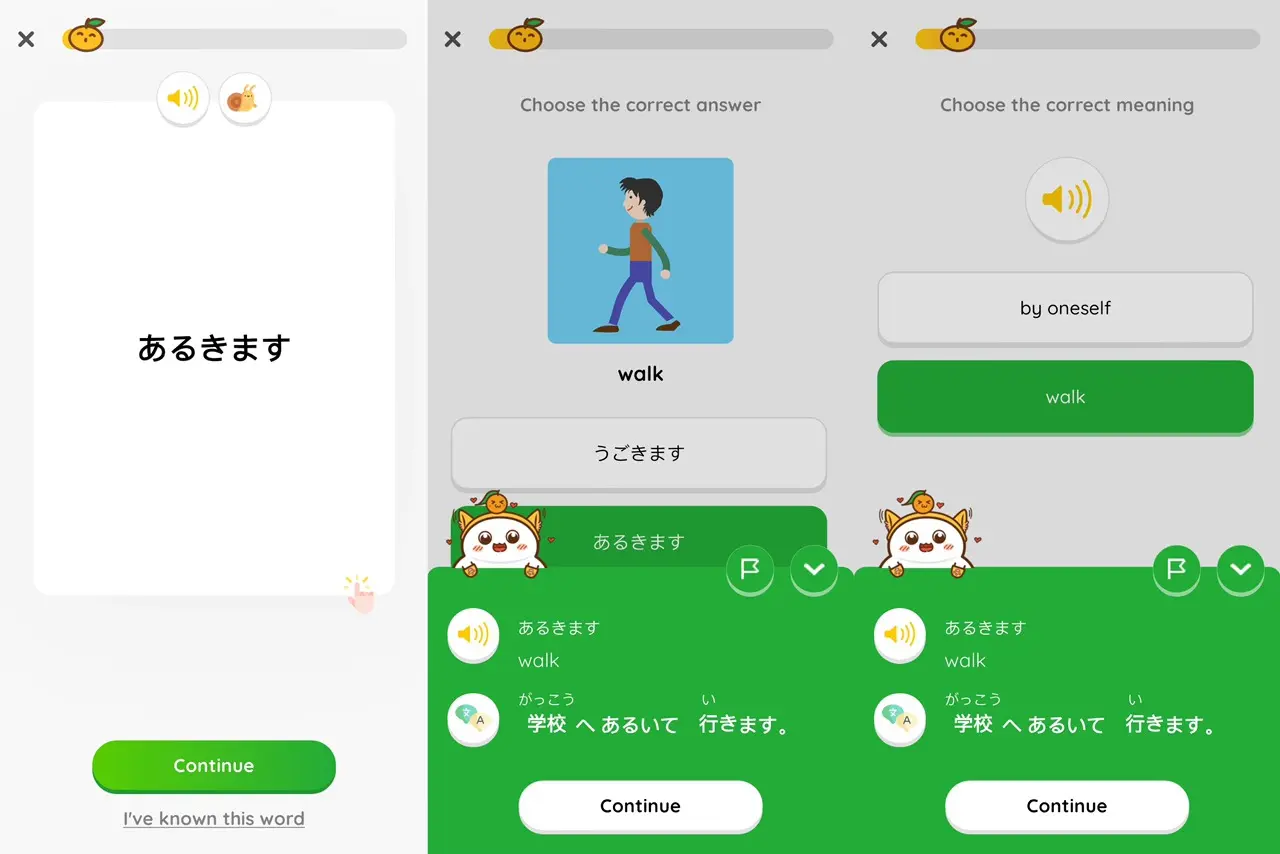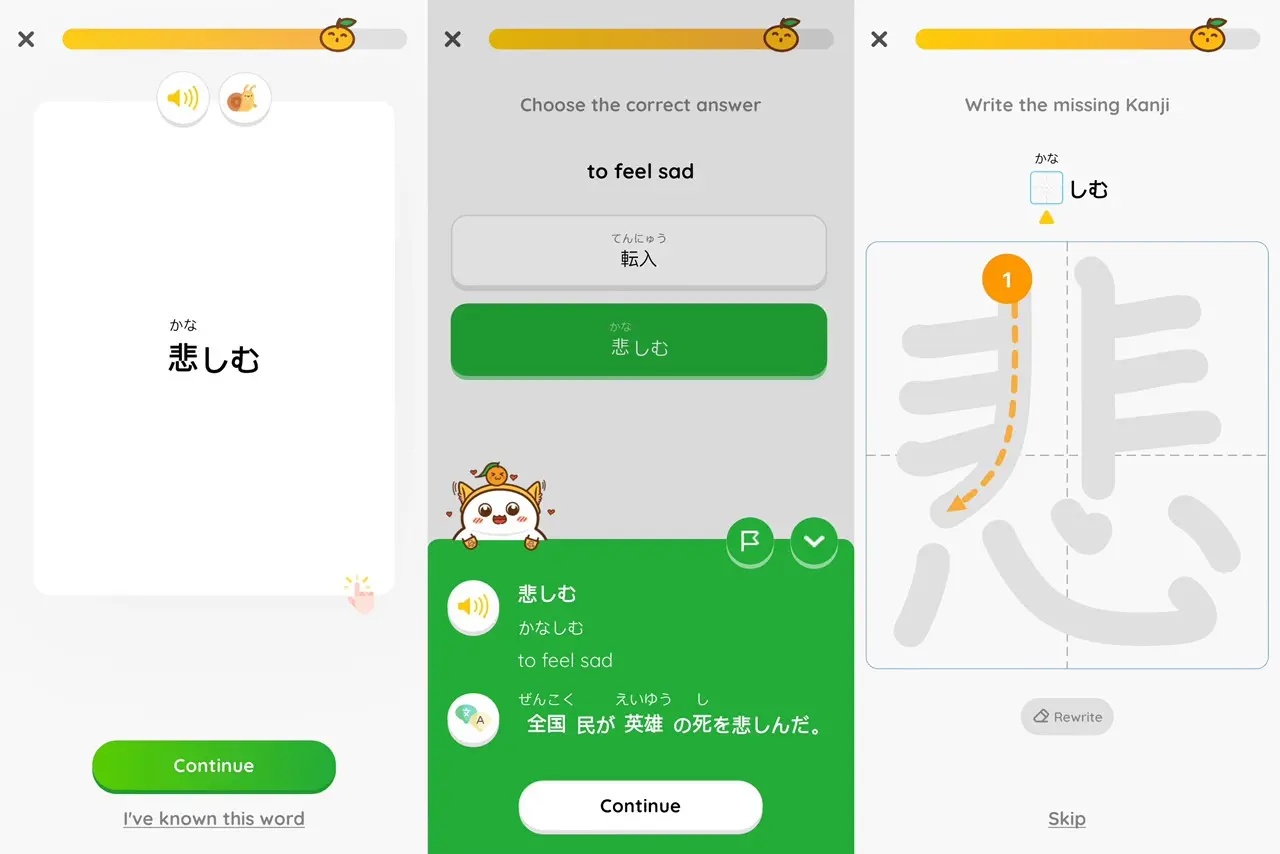Mastering verbs in Japanese is essential for anyone looking to achieve fluency in the language. Understanding the most common Japanese verbs is the first step towards constructing meaningful sentences and expressing yourself accurately.
This guide will walk you through the various categories of Japanese verbs, including U-verbs, Ru-verbs, and irregular verbs. We’ll also explore action verbs related to physical and mental activities, delve into other types of verbs, and examine auxiliary verbs, known as 助動詞 (Jodoushi). By learning how Japanese verbs work, you’ll gain a deeper insight into the language and enhance your ability to communicate effectively.
- Verb categories: The various types of Japanese verbs
- Action verbs: Physical
- Action verbs: Mental
- Other verbs
- Japanese auxiliary verbs: 助動詞 (Jodoushi)
- How Japanese verbs work
- Enhance your Japanese skills with MochiKanji
- Conclusion

1. Verb categories: The various types of Japanese verbs
U-verb
- 話す (hanasu): speak
| 話す (hanasu): speak | Casual | Polite |
| Stem | hanas | |
| Basic Form | 話す (hanasu) | 話します (hanashimasu) |
| Negative Form | 話さない (hanasanai) | 話しません (hanashimasen) |
The verb 話す (hanasu), meaning “to speak,” is composed of the stem “hanas” and the suffix “u.” As demonstrated in the Japanese verb chart, the suffix undergoes conjugation changes based on the verb form. It’s essential to note that when a verb ends in “u,” the final vowel is “u.” Thus, u-verbs can end with the Hiragana characters:
- う(u)
- く (ku)
- す(su)
- つ (tsu)
- ぬ (nu)
- む (mu)
- る (ru)
Examples
| English | Reading | Kanji | Hiragana |
| run | hashiru | 走る | はしる |
| dance | odoru | 踊る | おどる |
| speak | hanasu | 話す | はなす |
| wait | matsu | 待つ | まつ |
Ru-verb
- 見る (miru): to see
| 見る (miru): see | Casual | Polite |
| Stem | mi | |
| Basic Form | 見る (miru) | 見ます (mimasu) |
| Negative Form | 見ない (minai) | 見ません (mimasen) |
The verb 見る (miru), meaning “to see,” is a ru-verb that consists of the stem “mi” and the suffix “ru.” Like other ru-verbs, the suffix follows a specific conjugation pattern, differing slightly from u-verbs.
Examples
| English | Reading | Kanji | Hiragana |
| eat | taberu | 食べる | たべる |
| believe | shinjiru | 信じる | しんじる |
| sleep | neru | 寝る | ねる |
| wake up | okiru | 起きる | おきる |
Irregular verb
- 来る (kuru):come
| 来る (kuru) :come | Casual | Polite |
| Stem | ku / ko / ki | |
| Basic Form | 来-るく-るku-ru | 来-ますき-ますki-masu |
| Negative Form | 来-ないこ-ないko-nai | 来-ませんき-ませんki-masen |
- する (suru):do
| する (suru) :do | Casual | Polite |
| Stem | su / shi | |
| Basic Form | す-るsu-ru | し-ますshi-masu |
| Negative Form | し-ないshi-nai | し-ませんshi-masen |
The Japanese verb する (suru), meaning “do,” is a very handy word which can often turn a noun into a verb when it’s added next to the noun.
For example:
- 運動 (undou) + する (suru) = to exercise (doing exercise)
- 勉強 (benkyou) + する (suru) = to study (doing study)
- 買い物 (kaimono) + する (suru) = to shop (doing shopping)
2. Action verbs: Physical
Physical action verbs describe tangible actions, such as running, eating, or speaking. These are some of the most frequently used verbs in daily conversations and are essential for basic communication.
| English | Japanese reading | Kanji | Hiragana |
| run | hashiru | 走る | はしる |
| fly | tobu | 飛ぶ | とぶ |
| walk | aruku | 歩く | あるく |
| swim | oyogu | 泳ぐ | およぐ |
| climb | noboru | 登る | のぼる |
| sit | suwaru | 座る | すわる |
| stand | tatsu | 立つ | たつ |
| lift | ageru | 上げる | あげる |
| carry | hakobu | 運ぶ | はこぶ |
| throw | nageru | 投げる | なげる |
| push | osu | 押す | おす |
| pull | hiku | 引く | ひく |
| kick | keru | 蹴る | ける |
| hit | utsu | 打つ | うつ |
| bite | kamu | 噛む | かむ |
| bend | magaru | 曲がる | まがる |
| stretch | nobasu | 延ばす | のばす |
| dance | odoru | 踊る | おどる |
| write | kaku | 書く | かく |
| draw | kaku | 描く | かく |
| paint | nuru | 塗る | ぬる |
| clean | souji suru | 掃除する | そうじする |
| cook | ryouri suru | 料理する | りょうりする |
| wash | arau | 洗う | あらう |
| fold | oru | 折る | おる |
| cut | kiru | 切る | きる |
| open | akeru | 開ける | あける |
| close | shimeru | 閉める | しめる |
| tie | musubu | 結ぶ | むすぶ |
| pull | hiku | 引く | ひく |
| whisper | sasayaku | ささやく | ささやく |
| sleep | neru | 寝る | ねる |
| wake | okiru | 起きる | おきる |
| stand up | tachi agaru | 立ち上がる | たちあがる |
| jog | Jogingu suru | ジョギングする | ジョギングする |

To master action verbs in Japanese, especially physical actions, MochiKanji’s vocabulary course is your go-to resource. It offers interactive flashcards and engaging practice to help you learn and retain key verbs effortlessly. Start learning with MochiKanji today!
3. Action verbs: Mental
Mental action verbs describe intangible actions, such as thinking, wanting, or believing. These verbs are crucial for expressing thoughts, desires, and opinions in Japanese.
| English | Japanese reading | Kanji | Hiragana |
| Think | kangaeru | 考える | かんがえる |
| Remember | omoidasu | 思い出す | おもいだす |
| Forget | wasureru | 忘れる | わすれる |
| Understand | rikai suru | 理解する | りかいする |
| Know | shiru | 知る | しる |
| Decide | kimeru | 決める | きめる |
| Imagine | souzou suru | 想像する | そうぞうする |
| Realize | kizuku | 気づく | きづく |
| Concentrate | shuuchuu suru | 集中する | しゅうちゅうする |
| Doubt | utagau | 疑う | うたがう |
| Believe | shinjiru | 信じる | しんじる |
| Empathize | doujou suru | 同情する | どうじょうする |
| Feel | kanjiru | 感じる | かんじる |
| Like | konomu | 好む | このむ |
| Dislike | kirau | 嫌う | きらう |
| cry | naku | 泣く | なく |
| get angry | okoru | 怒る | おこる |
| feel sad | kanashimu | 悲しむ | かなしむ |

MochiKanji provides a focused learning experience to help you master mental action verbs in Japanese. Utilizing interactive flashcards and spaced repetition, you’ll effectively learn and retain these key verbs.
4. Other verbs
Here is a table showcasing various other verbs, including their readings, Kanji characters, and Hiragana forms:
| English | Japanese reading | Kanji | Hiragana |
| start | hajimeru | 始める | はじめる |
| stop | tomaru | 止まる | とまる |
| wait | matsu | 待つ | まつ |
| ask | kiku | 聞く | きく |
| answer | kotaeru | 答える | こたえる |
| show | miseru | 見せる | みせる |
| teach | oshieru | 教える | おしえる |
| learn | manabu | 学ぶ | まなぶ |
| buy | kau | 買う | かう |
| sell | uru | 売る | うる |
| borrow | kariru | 借りる | かりる |
| return | kaesu | 返す | かえす |
| lend | kasu | 貸す | かす |
| pay | harau | 払う | はらう |
| take | toru | 取る | とる |
| give | ageru | 上げる | あげる |
| receive | morau | 貰う | もらう |
| move | ugoku | 動く | うごく |
| join | sanka suru | 参加する | さんかする |
| finish | owaru | 終わる | おわる |
| dirty | yogoreru | 汚れる | よごれる |
| lead | michibiku | 導く | みちびく |
Boost your understanding of verbs in Japanese with MochiKanji, and master 1000 Kanji and words in just 1 month. Enhance your vocabulary and practice verbs effectively. Try MochiKanji today!
5. Japanese auxiliary verbs: 助動詞 (Jodoushi)
Auxiliary verbs, or 助動詞 (jodoushi), are used in conjunction with main verbs to modify their meaning. By adding an auxiliary verb, the meaning of the preceding word will be modified.
For example:
- 読む(Read)+そうだ
= 読むそうだ: They say that she/he will read
- 読む (yomu): “read” + たい (tai) [desire]
= 読みたい (yomitai): “want to read”
Here are some common Japanese auxiliary verbs:
| Japanese reading | Hiragana | Usage / Meaning/Example |
| (sa)seru | (さ)せる | Causation 食べさせる tabesaseruto make (one) eat |
| (ra) reru | (ら)れる | Passive / Ability, etc. 食べられる taberareru edible / being eaten |
| nai / nu | ない/ぬ | Negation 食べない tabenai (I do) not eat |
| you | (よ)う | Volition 食べよう tabeyou I will eat / Let’s eat |
| tai / tagaru | たい / たがる | Desire 食べたい tabetai I want to eat |
| you da | ようだ | Similarity 食べるようだ taberu you da it looks like (she/he) eats |
| sou da | そうだ | Hearsay 食べるそうだ taberu sou da they say that (she/he) eats |
| rashii | らしい | Hearsay / Behavior 食べるらしい taberu rashii they say that (she/he) may eat |
| da / desu・masu | だ / です・ます | Predication / Politeness (copula) 食べます tabemasu (I) eat |
How Japanese verbs work
Japanese verbs are categorized into three main types: U-verbs, Ru-verbs, and Irregular verbs. Each type follows specific conjugation rules, which determine how the verb forms change depending on the tense, mood, or politeness level.
U-verbs, such as 書く (kaku) meaning “write,” have stems ending in a consonant followed by “u.” The conjugation involves modifying the stem and adding specific endings. For example, the polite form of 書く is 書きます (kakimasu), and the negative form is 書かない (kakanai).
Ru-verbs, like 出る (deru) meaning “come out,” have stems that end in a vowel followed by “ru.” These verbs are generally simpler to conjugate. For instance, 出る becomes 出ます (demasu) in the polite form and 出ない (denai) in the negative form.
Irregular verbs don’t follow the standard conjugation patterns of U-verbs and Ru-verbs. The most common irregular verbs are する (suru) meaning “do,” and 来る (kuru) meaning “come.” Their conjugations are unique, such as する becoming します (shimasu) and 来る becoming 来ます (kimasu) in the polite form.
Understanding how these categories work is essential for mastering Japanese verb conjugation and using verbs correctly in different contexts.
Enhance your Japanese skills with MochiKanji

To solidify your understanding of Japanese verbs and accelerate your learning, consider using MochiKanji. This app offers a comprehensive vocabulary course, including verbs, with interactive flashcards enhanced with images and sounds. MochiKanji also incorporates the Golden Time feature, which leverages spaced repetition to optimize your memory retention.
Conclusion
Understanding verbs in Japanese is crucial for advancing your language skills. By familiarizing yourself with the most common Japanese verbs and their categories, you’ll be better equipped to use them in context, whether you’re discussing physical actions, mental states, or employing auxiliary verbs. With this knowledge, you can start crafting more complex sentences and expressing yourself with greater precision. Continue practicing and applying these verbs to see significant improvements in your Japanese proficiency.





